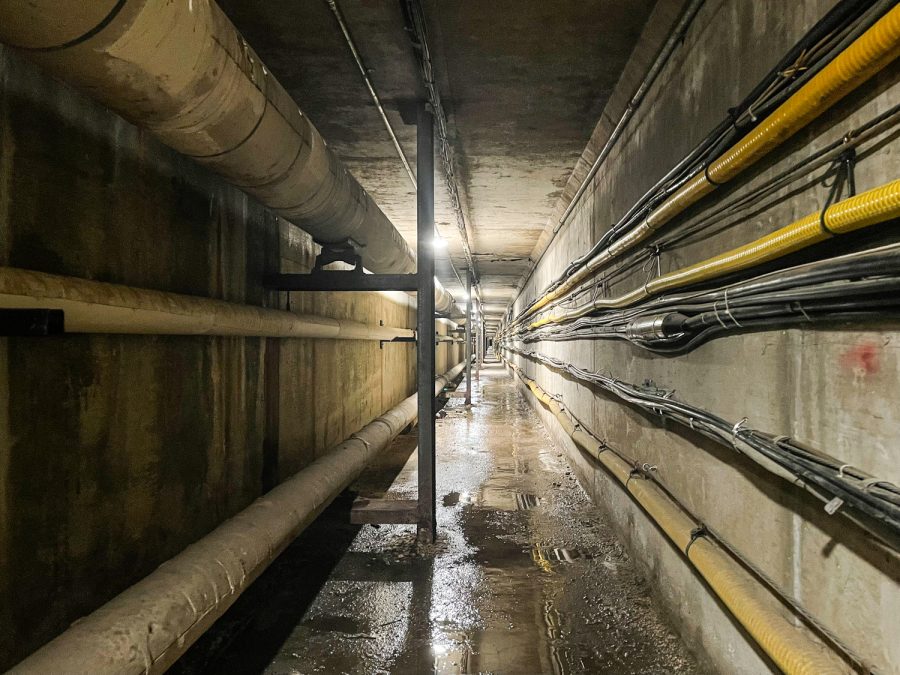Campus history: The steam tunnels beneath us
Over seven miles of utility tunnels run below campus; construction began in 1930s with new coal plant
Steam runs through one side of the underground tunnels while the electricity runs through the other side. There are over seven miles of tunnels below the WSU campus.
January 27, 2022
As Cougars walk on WSU’s Pullman campus, there are steam tunnels right below them that help with the communication infrastructure on campus, heating and electricity.
The steam tunnels are 5 feet wide and 6 feet tall on the inside. The steam runs through one side of the tunnel while the electricity runs through the other, said Jeff Lannigan, Facility Services associate director for utilities and energy. All remaining space is so that workers can get through the tunnels.
The steam tunnels are big enough for most people to be able to walk through them with just a few places where workers have to crawl, he said.
The history of the steam tunnels began in the 1930s when they were being built, he said.
“When the coal plant was built, there was actually a coal conveyor that predated the tunnels because the original coal plant that heated campus was up in the location of Daggy Hall,” he said. “When the new coal plant was built in the 1930s at the bottom of College Avenue, I think some of those coal conveyor tunnels became an avenue to run steam piping, and the tunnel system developed from there.”
The radio station that became KUGR used the steam tunnels for their wired-wireless system in 1993, according to WSU Libraries Digital Collections. They used 20 mini-transmitters and two miles of telephone wire that went onto the utility poles in the steam tunnels.
There are over seven miles of utility tunnels on campus, Lannigan said.
The heat for the steam tunnels comes from WSU’s five all-natural gas-fired boilers. Two of the boilers are at the College Avenue plant, and three are at the Grimes Way plant, he said. The heat is routed to each building through the steam tunnels.
“Using heat exchangers, we use that energy to heat the buildings, and then we recover the condensate and pump it back to the boilers, and the cycle continues,” Lannigan said.
There are a variety of ways maintenance personnel can get into the steam tunnels. A couple of access points include a ladder, using a door or a manhole, he said. These entry places are secured to ensure only the proper people access them.
The steam tunnels have significant safety and health concerns. Inside the pipes, there is 330-degree Fahrenheit steam, 185-degree condensate, the possibility of asbestos contamination and mold, Lannigan said. The state of Washington views the steam tunnels as a confined space, meaning they are not meant for people to be in.
“They’re not a great place to be any time of the year,” he said.
Some staff members do have to go into the steam tunnels to complete maintenance. When that happens, employees are equipped with a hard or bump hat, radio to the dispatch center and an air monitor, Lannigan said.
If there is anyone unauthorized in the steam tunnels, and Facility Services finds out, their protocol is to call the police, he said. This procedure is in place because it is unsafe and unhealthy to be in the steam tunnels.
There is limited information on the history of WSU’s steam tunnels. This could be for a variety of reasons, said university archivist Mark O’English.
First of all, the steam tunnels are dangerous, and they do not want unauthorized people to go into them, he said. In addition, building the steam tunnels was a continual process and did not happen all at once, meaning it escaped media attention for a long time.









